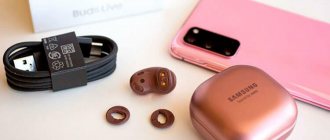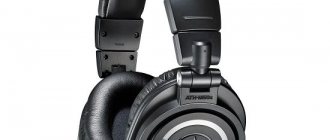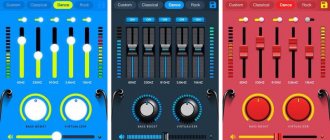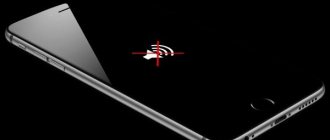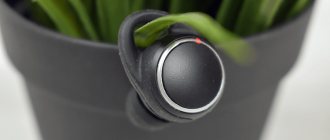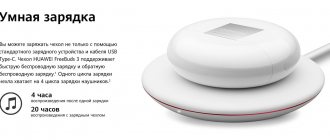What are we talking about?
We are talking about devices from Philips Fidelio . In addition to the Philips team, the people responsible for the legendary Gibson . The popularity of Gibsons is known far beyond the music industry, but if you need proof, check out the volume of a separate Wikipedia article dedicated to the musicians who own these instruments.
When musicians and experts make equipment for themselves, it can be seen (and heard) from afar. And if you season it with marketing, you also get a very worthy product, for which you are not ashamed 
More seriously, Fidelio is an attempt to combine classics and modern technologies in the mid-price segment. The headphones can be considered a challenge to sub-brands from Asia, capable only of design and pompous “show-off”: they also worked on the sound, this is immediately obvious.
At the same time, Philips is not limited to any one ultimate model. The range includes portable headphones, home headphones, “special” ones (for example, with a Lightning connector) and, of course, amateur and professional ones.
On our table are Fidelio F1, L2 and X2. Personally, I listened to the last ones, and there were a lot of impressions.
Text: Vitaly Gladkov Fidelio F1 will primarily appeal to young people. They are light, compact and delight the ear with bright sound. Taking into account decent sound insulation, the headphones will be an excellent option for outdoor use, and will also be suitable for those who like to listen to music at home in the silence of the night.
Design
The headphones are devoid of controversial design decisions. They look discreet and attractive . It is possible that those who like to stand out from the crowd will find them somewhat boring.
The Fidelio F1's design is as compact and lightweight as it gets for on-ear headphones. The folding mechanism allows you to further reduce the size. When folded, the headphones are, of course, unlikely to fit into a jeans pocket. However, they fit quite easily into the pocket of shorts that are not too tight.
The headphones are well assembled. The parts do not play, do not creak, and overall give the feeling of a reliable and durable product. The headband is based on a steel frame enclosed in a plastic casing. And to add softness to the rather rigid structure, it was covered with genuine leather.
It is very rare to find genuine leather in basic-level models. To Philips' credit, this is exactly the case.
The ardent heart of the Fidelio F1 are full-range 40mm speakers with neodymium magnets. They are enclosed in closed housings and covered with external aluminum covers. The rear side of the speaker cups is topped with ear pads made of soft memory foam.
To improve sound insulation, the ear pads are firmly glued to the speaker housings. Therefore, you should be doubly careful with the rather delicate surface of the linings. Damaged ear pads cannot .
Fidelio F1 is not just headphones, but a full-fledged headset. The detachable 3.5 mm cable houses a microphone with a control button.
According to the manufacturer, the headset is compatible with smartphones from Apple, BlackBerry, HTC, LG, Sony Motorola, as well as modern Samsung and Nokia models. If problems arise with the cable, it can be easily replaced. This is much more convenient and easier than buying new headphones due to a damaged wire.
Comfort
The manufacturer deprived the Fidelio F1 of an active noise reduction system. However, its absence is more than compensated for by decent sound insulation. Properly worn headphones cut out a good portion of external noise and do not irritate others with the noise of the music being played at almost any volume level. This quality is worthy of special praise. Bravo!
The length of the headband has an impressive range of adjustment. For precise symmetrical setting of the temple size, just like in older models, scales are applied to the inner frame.
The elastic headband holds the headphones securely and firmly on your head. However, they should be used with some caution when playing sports. Shaking and sudden turns of the head can dislodge the headphones, which can cause them to fall on your neck, or worse, to the ground.
On the other hand, those with thicker hair on their heads are unlikely to think about such trifles.
I would especially like to note the effect created by the ear pads. Fitting tightly to the ears, they create a single whole with the speaker cup and the ear. Of course, the ear pads make the ears a little hot, but they do not cause any discomfort or pain during use. The foam from which the pads are made gently hugs the ears without squeezing them.
Philips also took additional care of the safety of the headphones and added a faux suede handbag to the package.
Sound
The dynamic drivers, which are quite large for compact headphones, are capable of reproducing frequencies in the range from 7 to 40,000 Hz , which, coupled with a low impedance of 16 Ohms, guarantees excellent performance of the headphones even when paired with a smartphone.
Philips Fidelio F1 surprised me with its unusual sound tuning. The sound of the headphones at half the maximum volume seemed a little flat to me. However, when the volume level is increased to 75% of the maximum, the headphones literally blossom.
The sound is filled with crisp, moderate bass, detailed highs, while maintaining a clear midrange. The music gains depth, richness and enthusiasm, prompting you to make the sound a little louder.
The most interesting thing is that the Fidelio F1 maintains an ideal tonal balance, without detecting significant acoustic distortion, almost throughout the entire volume range above 75%. This is especially valuable considering that headphones can be actively used while traveling, on noisy streets or in public transport.
At a volume level close to the maximum, you can feel how the speakers work out low frequencies, transmitting vibration to the ears through the ear pads.
The headphones have an excellent volume reserve. However, it is better to limit comfortable listening to a level of about 90% of the maximum. Then the sound becomes prohibitively loud and threatens hearing impairment.
Specifications
| Type | On-ear headphones with headband Headset |
| Frequency range | 7 – 40,000 Hz |
| Resistance | 16 ohm |
| Sensitivity | 107 dB |
| Max. input power | 150 mW |
| Acoustic design | Closed |
| Emitter diameter | 40 mm |
| Weight | 155 gr |
Conclusion
Of course, Gibson-Philips turned out to be imperfect, but excellent headphones for all occasions. While the Fidelio F1 may sound a little tight at times, it doesn't always have the ability to reproduce the full width of the soundstage. However, the positive aspects - such as excellent sound insulation, high-quality materials and comfortable sound for the street - make you forget about all the shortcomings.
Philips Fidelio F1 is not an audiophile device for the home, but a musical companion for all occasions.
Buy Fidelio F1 with a 10% discount in the official Philips store!
Text: Ilya Shevtsov If you are a true musical conservative, then this model is just for you. Fidelio L2 is the older brother of the M2L model with a Lightning connector, but is equipped with a standard 3.5mm minijack. Did this affect the sound?
Philips Fidelio L1 - headphones for music lovers
When talking about headphones, and in principle about all audio electronics, one cannot ignore one of the most famous companies in this field. I'm talking about Philips now. We've already reviewed a couple of their sports headphones designed in collaboration with O'Neill: The Stretch and The Construct. But the company has great headphones for music lovers, presented in the Fidelio series. They will be discussed in this review.
I want to say right away that I really liked the headphones, so I will praise them, despite their shortcomings, and try to explain why the Fidelio L1 have become my main headphones now.
With age, you begin to understand and appreciate restraint: in music, in style, in design. Bright flashy colors and rich functionality are replaced by aesthetic pleasure from rich materials and comfortable design. I can no longer imagine myself with some red or white plastic headphones on my head, even if they bear the name of some famous musician on the packaging. I've long outgrown this cheap teenage kitsch. Headphones are the most intimate of all audio components, so the impression they make, both visually and tactilely, is important to them. The company even took a thorough approach to creating a website for the Fidelio line; it immediately conveys the main ideas embedded in it.
In headphones (and not only), Philips does not skimp on materials and design work; even the relatively inexpensive models of the Citiscape series delight with the material, packaging and good sound. In the top-end Fidelio series, this is generally taken to a very high level.
Specifications
- Drivers: dynamic, 40 mm
- Frequency range: 12 Hz – 25 KHz
- Impedance: 26 Ω
- Sensitivity: 105 dB/mW
- Maximum power: 200 mW
- Harmonic distortion:
- Cable: 2 pcs., 1.1 m
- Weight: 364 g
Packaging and delivery
Externally the box is very simple. Dense and thick black cardboard with drawings and text looks restrained and stylish. Inside, on a velvety bed, are the headphones themselves. Underneath it, all the accessories are stored in a paper box. The delivery set pleases me. In addition to the headphones themselves and various papers with instructions and a warranty card, you will receive a nice velvet bag for storing the headphones, an adapter for a 6.3 mm jack and two cables.
Since the headphone cable is replaceable, the manufacturer included two cables in the kit - a simple one and one with a control panel and microphone for Apple equipment. Therefore, these headphones can rightfully be considered one of the highest quality headsets for MacBook.
The replacement cables are made quite simply - a short wire comes out of the left earphone, at the end of which there is a standard 3.5 mm jack. The wires also contain a jack on one side, and a socket on the other. This design allows for flexibility: if desired, you can easily combine both wires into one if you need a longer cable. Fabric braided cables are very durable and reliable.
Design and wearing comfort
It is the design that attracts people in the headphones in the first place. The developers tried to combine vintage and modernity, and they succeeded quite well. The result is a design from the “for all time” series. The headband is made of dark brown leather with stitching and the word "Philips" is embossed on top. The rest of the structure is almost entirely metal, and of considerable thickness. A lot of attention is paid to small details that are not immediately apparent: the screws for fastening the cup holders, the twisted wires connecting the cups to each other, the concentric circles on the cups themselves, the meshes on their outer side - all this creates a special look for the headphones, it is impossible to confuse them with others . Separately, I would like to note the unique serial number printed on the inside of the headband - you will never confuse your headphones with others. Another impressive feature is the windows on the inside of the headband with a scale showing how far you have extended the arms.
The cups rotate freely around two axes, this allows them to take the most convenient position for you. If necessary, you can turn the cups flat, this is convenient, for example, when transporting. The headband adjustment mechanism is reliable and rigid, the arms move with noticeable clicks and are firmly fixed.
The ear pads are very comfortable, they are soft, cover the ears entirely, and they use memory foam filler. This, combined with a soft headrest, gives unprecedented wearing comfort. The headband size margin is large (although usually only the Chinese save on this). Due to the semi-open design of the ear cups, the ears practically do not overheat and the headphones can be worn for a long time.
Sound insulation is not bad, but due to the semi-open design it is one-sided. External noise is almost imperceptible, but music outside sounds quite audible.
Sound
The following equipment was used to listen to the headphones.
- MacBook Pro Early 2011
- Fiio E17 in HogMode as DAC/amplifier
- Fidelia as a player
- Recordings in lossless formats
- Brainwavz HM5 as a comparison
The headphones warmed up for 60 hours, the excess brightness and sharpness of the high-frequency range disappeared.
I want to say right away that these are not audiophile headphones. Well, never at all. They don't have the super high resolution and transparency, nor the cool, neutral sound of monitor headphones. The Fidelio's sound is warm, with a noticeable emphasis on the lower frequencies, although not excessive. The bass is well controlled and does not overwhelm other frequencies, which makes it possible to listen well to even very brutal tracks like Nile (although not ideal; headphones should be selected especially for such music).
The bass naturally moves into the mid-range, which also plays well. There is an emphasis on the upper mids, which adds presence to the vocals. For example, the classic “Bang Bang” from Nancy Sinatra is simply great to listen to: in the recording, the voice is on the right channel, the guitar is on the left, and Fidelio perfectly conveys the effect that the sound engineers wanted to emphasize. There seems to be virtually no sibilance.
The highs are good in terms of quantity, but lack a bit of transparency and control. Although on most tracks it's not noticeable.
The headphones cope well with building a stereo panorama, since the drivers are placed in the cups at a slight angle, this gives an interesting effect of a wide, although not very deep, stage. On many tracks it sounds simply super (for example, the masterpiece “Don't let me be Misunderstood” in the disco arrangement of Santa Esmeralda).
In general, the sound is very musical, perhaps there is some kind of psychology at work here, but it always seems a little vintage to me, matching the design of the headphones.
Compatibility
I listened to these headphones simply from the audio output of a MacBook, and tried them with an iPhone and iPad. In general, the headphones are sensitive enough to work with low-power sources at a good quality level, but the magic of sound that I wrote about above is lost because of this. The sound remains at a good level, but both the lowest bass and the highest treble are lost and the immersion effect and captivating sound are lost. In general, probably for any headphones over $200, a good source is simply recommended.
The three-button remote works great with any Apple technology, the microphone is also good, your interlocutors will hear you normally during any conversations, and the comfortable fit will prevent your ears from getting tired.
conclusions
These are not headphones for audiophiles who appreciate the special enchanting resonances of the second violin of the Berlin Symphony Orchestra, which are revealed only by a vintage amplifier with authentic tubes from 1953 and platinum-plated silver wire. These headphones are not for young lovers of fashion and killer bass in a plastic design. Fidelio L1 are headphones for those who love music, not sound, style, not kitsch, practicality, not fashionability. I would say that these are the headphones that will be the last choice for so many looking for good sound, reliable quality and decent looks. The headphones look great both in the Apple ecosystem and among other competitors in terms of price. In this price range you can find better sounding headphones, but they will lose in comfort and design. In general, Fidelio has what you need from good headphones - the ability to give goosebumps from music.
Crystal Precision
It’s not for nothing that the Philips line of “Fidelio” headphones bears its name, derived from the English word “Fidelity”, which can be translated as “precision”. The headphones in this series are distinguished by very detailed and clear sound. Moreover, this definition applies to all models, from “plugs” to full-size on-ear headphones. And the L2 model is no exception.
The Art of Technology
Fidelio L2 are semi-open headphones, the sound in them is distributed harmoniously. What enters your ears is not a crushed bass with barely audible high notes, and not an ear-piercing high-pitched mosquito squeak with drums rustling in the background, but an absolutely accurate, verified musical picture.
Philips engineers managed to achieve good sound using several unique technical solutions used in the Fidelio line of full-size headphones.
The L2, like its predecessor the Philips Fidelio L1, is built around two 40mm neodymium drivers of the original design, only this time with improved sensitivity. These small but powerful magnets with a slot in the center are able to enhance the sound of low frequencies, add richness to the bass, and cleanse the mid frequencies and harmoniously blend into the overall musical flow. For a music lover, this means that the music will be holistic and three-dimensional, without distortions towards low or high sounds.
The emitters are placed in specially designed aluminum earcups that can dampen excessive vibrations caused by music. The cups are connected to special plastic rings, thanks to which the entire structure is protected from backlash and possible resonances.
The metal grilles covering the cups from the outside are aesthetically better than in the L1 model, without losing any functionality. Like their predecessor, they implement a semi-open headphone design and evenly distribute the sound coming into your ears into the surrounding space.
The third pillar of the sound of L2 headphones is the location of the emitter itself inside the housing.
The magnets are located in the headphones at an angle that corresponds to the natural inclination of the auricle. Therefore, the sound from the headphones goes directly into the sound channel of your ear, without being distorted or losing a single note along the way. Thanks to this technical solution, you don’t feel tired even after listening to music for a long time.
Soft cushions filled with memory foam also add to your listening comfort. Covered in leather, they fit comfortably and securely to the head, protecting the listener from the sounds of the outside world and allowing you to enjoy music in any environment.
conclusions
Despite the fact that Fidelio L2 headphones are not cheap, they are completely worth their cost. Moreover, this is one of the best offers on the market in terms of price and sound quality. The design, in my opinion, is very successful - discreet, but not devoid of grace. The quality of materials is generally excellent: metal, leather, and only a little bit of plastic. As an alternative, you can consider one of Sony's top models, namely the MDR-1A. True, Philips sound better. However, it depends on the direction of the music.
As a more affordable alternative, we can recommend older Philips models, for example, Fidelio L1. These headphones can still be found on sale at a price of about 7,000 rubles, the sound quality is comparable, the sound character itself is very similar to the L2, but the construction is more weighty, and the design is a little provocative.
Read the full text of the article on Ferra.ru
Verified design
In addition to the sound, the appearance of the headphones also deserves special praise. High-quality materials - aluminum and genuine leather - not only look great, but also give the L2 model additional comfort to use.
Taking into account the experience of the L1, designers and engineers have improved ergonomics in the L2. For example, the cable now connects directly to the headphones through a secure connector, rather than using an additional short cable coming out of the headphone body. The designers also worked on the headband, making it more elegant and thinner.
The whole structure weighs a little more than three hundred grams and sits well on the head thanks to the adjustable height of the headband and the method of attaching the earcups themselves to it.
We have not forgotten about ease of use, carrying and storage. A special protective fabric case, durable and roomy, will protect the L2 from the misfortunes of the outside world.
The headphones easily take a flat shape, allowing you to put them in the included case. The detachable cable protects the headphone jack from excess voltage in the “traveling” state. Speaking of the cable: the length is 1.2 meters, there is a thick braid and two versions - with and without a multifunctional remote control. The kit includes a 6.3mm adapter, which allows you to connect the headphones to stationary music equipment.
Design solutions in the L2 model were awarded prestigious awards - IF Product Design Award 2014 and Red Dot Design Award 2014.
Classics in a new way
Fidelio L2 headphones look and sound great. They would fit in perfectly both in the everyday life of a modern “digital” music lover and in a small recording studio, like the Californian “Soundcity”, where the grunge trio Nirvana recorded their legendary record “Nevermind”.
The lush sound of L2, iridescent and lively, takes its listener back a couple of decades ago, to the times of tube garage gatherings with guitars, hurricane live concerts in underground clubs and the good old tape music players. Fidelio L2 is a true example of neoclassics - traditional sound is provided here with the most modern and new technological solutions.
L2 should be ideal for both conservative music lovers and modern music fans. The first, accustomed to listening to the original vinyl records of the 80s, will appreciate the “liveness” and spaciousness of the sound . The latter will pay tribute to the modern technologies used in L2, which can make even new music sound beautiful and meaningful.
Comfortable, lightweight, beautiful and high quality, sounding great and looking great - all this is the Philips Fidelio L2.
Buy Fidelio L2 with a great discount at the Philips store!
Headphones that you don't want to take off. Is this real life?
Fidelio X2 is considered the top model in the line, and deserves it one hundred percent. I would even say it differently: I have never heard anything like this for this money. And I didn’t put it on. Just wow, period.
I see no point in discussing the box and packaging. We've all seen cardboard, right? The packaging of the headphones, by the way, is spartan: here we only have a cable, an adapter for professional equipment and a small clip.
Powerful cable
Let's take a quick look at this cable. It is protected, with a thick fabric braid, which should prolong the service of the cord for many, many years. But the trick is different.
The headphones come with a 3-meter cable and nothing else. So that you understand, you can wrap it around yourself three times, like beads on an aborigine, and there will still be 
The long cable is not without reason: the Fidelio X2 are positioned exclusively as home or studio monitor-format headphones designed for stationary listening. They offer to connect them to professional equipment - so they put in enough cable to fit anywhere. You can buy a short one for 200 rubles at the nearest electronics store, so I can’t consider this a drawback.
Calm design
Fidelio X2 has a classic shape without obvious modern frills. The main part of the body is made of plastic, but it is crowned with a large steel mesh and an aluminum rotary ring. The speakers are attached to the headband through a steel base, and the headband itself is covered with a thick layer of leather.
There are no buttons or switches on the case, and all attention is drawn exclusively to the steel mesh. It is clear that the headphones were not made to show off with them somewhere. Everything is focused on providing maximum comfort.
Comfortable fit
The stationary purpose of the headphones allowed Philips not to waste time on trifles in the literal sense. Fidelio X2 is a big thing, no matter how you look at it. Whether on the table or on the head, they look impressive, like monitors in a studio booth. I call these “Cheburashkas”, if anything, and here it is quite appropriate.
On the back side of the headband there is an arc, on which a pillow made of mesh fabric is placed. The material is very soft and instantly takes the shape of the head due to the natural tension of the arch.
The headband design is atypical for modern, mass-oriented headphones. It adapts to any shape, does not press, and does not leave discomfort after prolonged wear. Such systems are used in amateur and professional studio equipment, and I did not expect to see them in a relatively affordable model.
The ear pads make an even greater contribution. They are non-removable, moderately dense, with high walls. To my surprise, they are covered with velor. A big surprise at a time when almost all manufacturers of full-size and on-ear headphones choose leather.
Velor is a very soft, pliable material that, as ear pads, has low sound insulation but high air permeability. In practice, this means that you can wear headphones even in warm weather - and not take them off from time to time to “ventilate” your ears. The difference with skin in the same role is simply huge.
I'll say more. I wore these headphones for seven hours at home without taking them off. Seven o'clock! This is a record in such headphones. And we could continue. I wouldn’t last this long with any full-size, much less over-ear, model that I’ve ever tested. This is the main advantage of velor, and it more than compensates for the lack of insulation when we talk about home headphones.
Now I'm on the team of velor lovers 
Sound! SOUND!
First acquaintance with Fidelio X2: 1. Took it out of the box, twirled it and put it on. 2. Connected to the iPhone, played a familiar track from the library. 3. I didn’t believe it, I filmed it and turned on the HD track in a third-party player.
A little later I looked at the reviews on Amazon. The same thing, reflects the impressions 100%:
The headphones sound great . In a way that others don't sound. Well, now let's get serious.
SOUND
The model uses 50mm neodymium drivers and a proprietary LMC (Layered Motion Control) diaphragm, which improves the sound and variety of high frequencies, while maintaining its naturalness and presence. The speakers are located anatomically, at an angle of 15 degrees. The idea is similar to that used in earplugs: sound is directed directly into the ear canal.
The open design enhances the richness of sound with the realistic transparency you'd expect from high-end headphones, especially full-size ones. For home headphones, the loss in external and internal insulation is not critical, and the benefits are worth it.
It is worth noting that Fidelio X2 is a logical continuation of the X1 model, and specifically in terms of sound quality. In particular, we approached high frequencies differently, making them a little more lively and removing unnecessary “flowingness” with simbilates. We also shifted the emphasis of the bass, making it captivatingly rich, but not booming - capable of being insinuating, soft and at the same time noticeable, without overshadowing the music.
Sometimes it seems that somewhere inside there is a small subwoofer that operates at low power and saturates the compositions with rhythm and motive, which is lost in many open headphones and covers up everything else in closed ones.
The soundstage in the Fidelio X2 is huge , incomparable to anything I've listened to before. It’s as if you put your ear to a shell, which, instead of the sounds of the sea, reproduces a direct broadcast from a concert or just a studio recording.
The X2 motif is slightly warm, elevated in the middle of the spectrum, giving a special charm to jazz compositions. Having listened to Wayman Tisdale's recently discovered album, I almost shed tears in places: the bass guitar is so rich and the saxophone is so bright that you want to get up and dance even with such a huge thing on your head. And yes, in the end I danced, fortunately at home - I do what I want.
By the way, in X2 modern pop music reveals itself elegantly, including avant-garde alternative, which has recently discovered a variety of background sounds and low frequencies. Here the awesome (there is no other way to say it) “midbass” manifests itself, bringing you into a state of trance - as intended by the composers.
It got to the point that I dug out in the closet an old, but still perfectly working Cowon C2 player, whose sound on the Wolfson chip I still consider significantly better than in any of the iPhones and modern iPods. And there is my entire media library from four years ago. Consider it a trip into the past. That day I wore headphones for those same 7 hours. And my wife, watching me in shock, finally asked me to listen too. I also went dancing, but to my own music. 
I have a special track that I only play on those headphones that are worthy of it. Its channel separation and breadth of music scene are simply incredible. To date, Fidelio X2 has played it better than anyone else , simply beyond competition. If you test X2 somewhere, try it too, it should be a blast.
Conclusion
In short, guys. I know where you can listen to Fidelio X2 in Moscow. You need to listen to them . It is something.
Philips, BRAVO.
Great home headphones with 10% discount at the Philips store!
Read other materials about Philips Fidelio series products: Review of Philips Fidelio L1 and M1. Contrasting sound Philips Fidelio M2L review. The first headphones with a Lightning cable We found a universal soundbar
If suddenly the discount does not count, use the promo code:
Sound
The following equipment was used for listening.
- MacBook Pro Early 2011
- Yulong DA8 in HogMode as DAC/amplifier
- Fidelia as a player
- Recordings in lossless formats
- AKG K702 and Fostex T50RP as headphones for comparison
Before listening, the headphones were warmed up for 48 hours, there were no changes in the sound.
To begin with, a very interesting feature. The beautiful and comfortable soft-braided cable that comes with the X1 turns out to have a fairly noticeable (by cable standards) resistance of approximately 1.9 Ω along each line, which is three times more than most headphone cables. In many cases, this causes the headphones to lose some of their bass response (which is especially unfortunate for bass-focused headphones), and sometimes it can cause crosstalk. Fortunately, the X1 cable is replaceable, connecting with a regular 3.5mm plug in the left ear area, so you can find plenty of replacement options on eBay (or your local electronics store). I went further and ordered custom-made cables from Era-in-ear, which generally gave the effect: the sound became cleaner and the treble became more articulate.
After replacing the cable, without fear of loud comparisons, I will say that in terms of sound, these headphones can easily compete with many recognized market monsters, for example, the Sennheiser HD650. Of course, the difference in nuance and presentation will be noticeable, but the level at which X1 play is undeniably high.
In general, the headphones have a bass bias and the sound is warm. The bass is well developed, has a pleasant texture and dynamics. Their speed is enough for most genres, even the most brutal and fast ones. The amount of bass will be enough for all but complete bassheads.
It is very pleasing that the low frequencies do not clog the rest of the range; usually, at least the lower mids suffer. This is not the case in the X1; the sound is very smooth, I think, largely due to the fact that the headphones are open (headphones with an emphasis on bass are often made closed).
The upper frequencies are very finely tuned. Headphone developers often walk a fine line when working on HF. If there are a lot of highs, the sound will be bright and aggressive, and listening to such headphones for a long time will be unpleasant. If you “press down” the high frequencies, all the air and lightness of sound will disappear from the composition. Luckily, like Nik Wallenda crossing Niagara Falls on a tightrope, Philips' audio engineers have found that sweet spot that delivers a relaxed yet airy sound.
To sum up the frequency response - everything is as it should be for high-end headphones: good collected bass with an emphasis on it, pleasant and detailed mids, not annoying and light highs. The X1 has no flatness or neutrality, the headphones are tasteful, well suited for music of almost any genre: rock, metal, jazz, blues, electronic music - everything lends itself well to them.
The conventional stage is of medium size; Fidelio does not try to expand it or make it wider than it is. The instruments are well separated and have a physicality to them.
